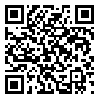Volume 11, Issue 1 (3-2023)
JRIA 2023, 11(1): 64-82 |
Back to browse issues page
Download citation:
BibTeX | RIS | EndNote | Medlars | ProCite | Reference Manager | RefWorks
Send citation to:



BibTeX | RIS | EndNote | Medlars | ProCite | Reference Manager | RefWorks
Send citation to:
sheidaneh morid M A, Sharifi M, Mmoeini S M. (2023). Determining Factors Affecting the Evaluation of the Rise of Qur’anic Human Values in the Housing Architecture Using Expert Views (Case Study: Comparative Examination of Tehran’s Apartment Housing and Housing in the late Traditional Era in Tehran). JRIA. 11(1), 64-82. doi:10.52547/jria.11.1.1
URL: http://jria.iust.ac.ir/article-1-1461-en.html
URL: http://jria.iust.ac.ir/article-1-1461-en.html
1- Department of Architecture, Borujerd Branch, Islamic Azad University, Borujerd, Iran
2- Assistant Professor Architecture, Department of Architecture, Doroud Branch, Islamic Azad University, Doroud Iran
3- Assistant Professor, Department of Architecture, Malayer Branch, Islamic Azad University, Malayer, Iran
2- Assistant Professor Architecture, Department of Architecture, Doroud Branch, Islamic Azad University, Doroud Iran
3- Assistant Professor, Department of Architecture, Malayer Branch, Islamic Azad University, Malayer, Iran
Abstract: (3452 Views)
The changing patterns of identity developments in housing architecture in the wake of the modern 20th-century architecture resulted in the creation of new types of residences in the world, especially in Iran. Previous research presumptively considered the traditional era housing as conforming to religious values, while contemporary housing (especially apartment types) was regarded to contradict those values. This study aims to find some accurate criteria based on Islamic principles to determine the accuracy of these hypotheses. Thus, the main question is: “Which Qur’anic values about the housing architecture can be elicited? The research goal is to explain the human values from the Qur’an in line with contemporary housing architecture. The research method includes a review of the literature and library sources, uses of the Qur’an and valuable Islamic sources, a field survey of the samples, and qualitative content analysis of the field interviews via the Delphi method. It also uses a semi-structured and deep interview style with academic and seminary experts of Tehran. In the end, the study 1) explained and determined the Qur’an based human values consistent with the contemporary housing architecture of Tehran on a five-point Likert scoring scale that included the following (the rates are on average): peace and comfort (4.9), intimacy (4.8), servitude (4.7), human dignity (4.7), privacy (4.6), safety, strength and firmness (4.6), humiliation (4.5), bio-sustainability factors (4.5), solitude (4.5), creativity (4.4), recitation of God’s names (4.2), dynamism and activity (4.1), proportions (4.1), satisfaction (4), self-confidence (4), order (4), applied decorations (3.9), social relations (3.9), the environment (3.8), house area (3.7); 2) determined the effects of 33 Qur’anic human values on Tehran’s traditional housing architecture to be 85%, and on contemporary Tehran’s apartment housing to be 15%, and 3) investigated through the expert consensus the application and manifestation of the privacy as one of the Qur’anic human values of this research in the traditional and contemporary housing architectures, with the results given in Table 4. In another analysis, the findings of this research were compared to those of the previous studies, and the case study of this study was compared during the reign of the Qajar and contemporary era apartments. These Qur’anic human values are presently diminishing or non-existing in contemporary Tehran’s apartment housing. This research can be applied for planning by the Ministry of Roads and Urban Development, Ministry of the Interior, and Municipalities, as well as the Revolutionary Housing Foundation and the National Engineering Organization, and serve as a model for Islamic housing in cities andvillages.
Type of Study: Research |
Subject:
Definition and analysis of the latest theoretical and practical accomplishment in Islamic architecture and urbanism
Received: 2021/05/25 | Accepted: 2023/03/4 | Published: 2023/05/1
Received: 2021/05/25 | Accepted: 2023/03/4 | Published: 2023/05/1
Send email to the article author
| Rights and permissions | |
 |
This work is licensed under a Creative Commons Attribution-NonCommercial 4.0 International License. |






